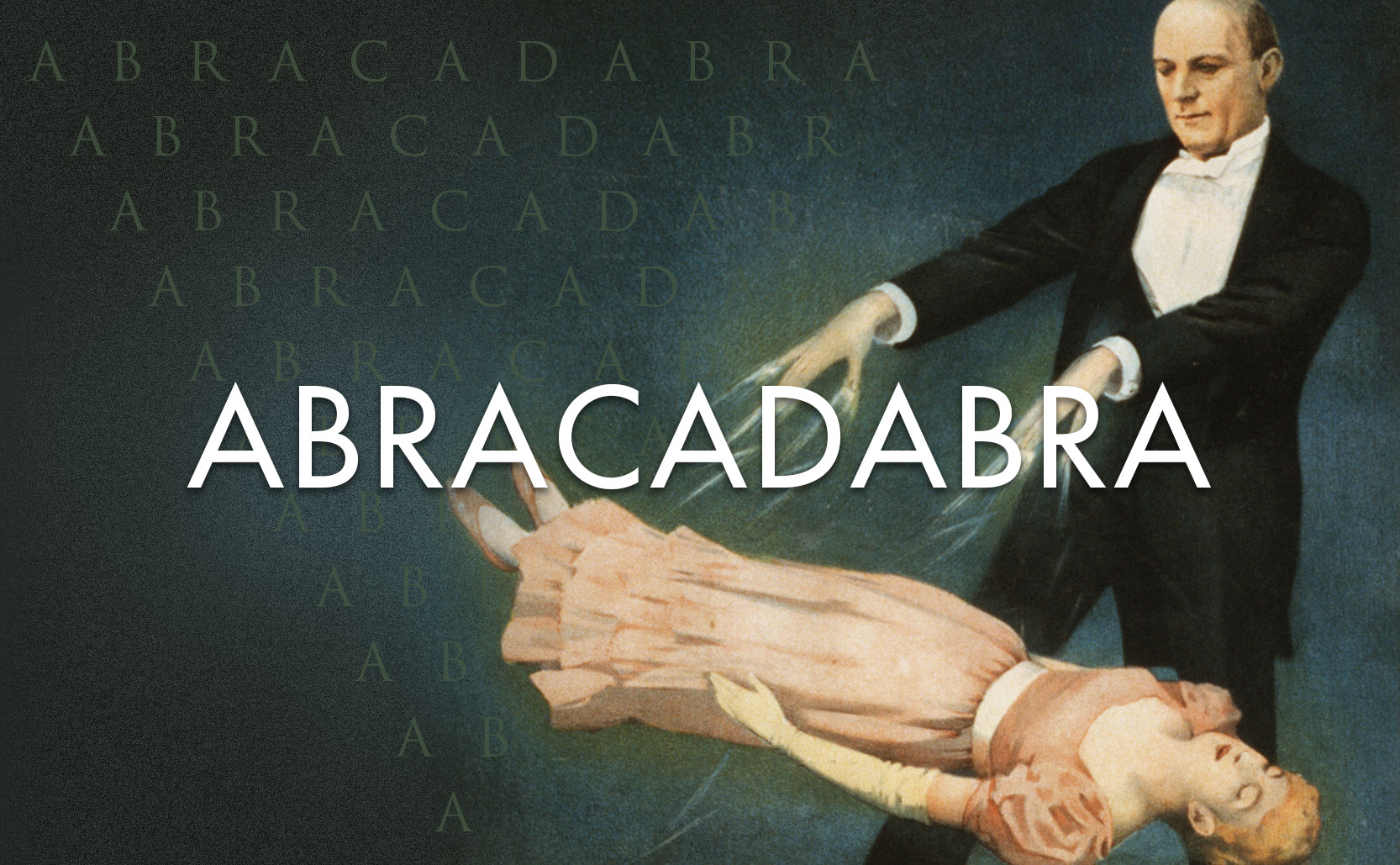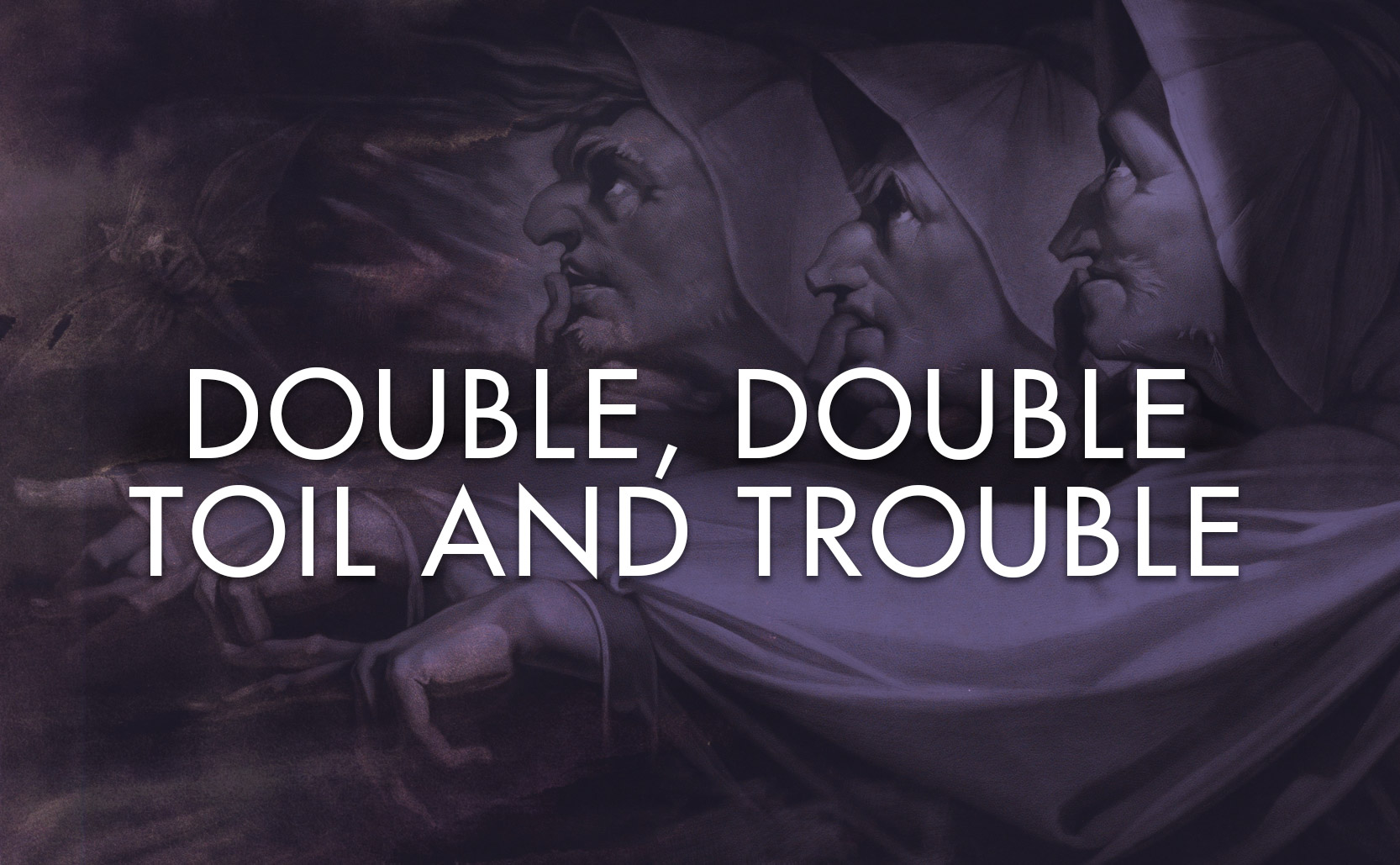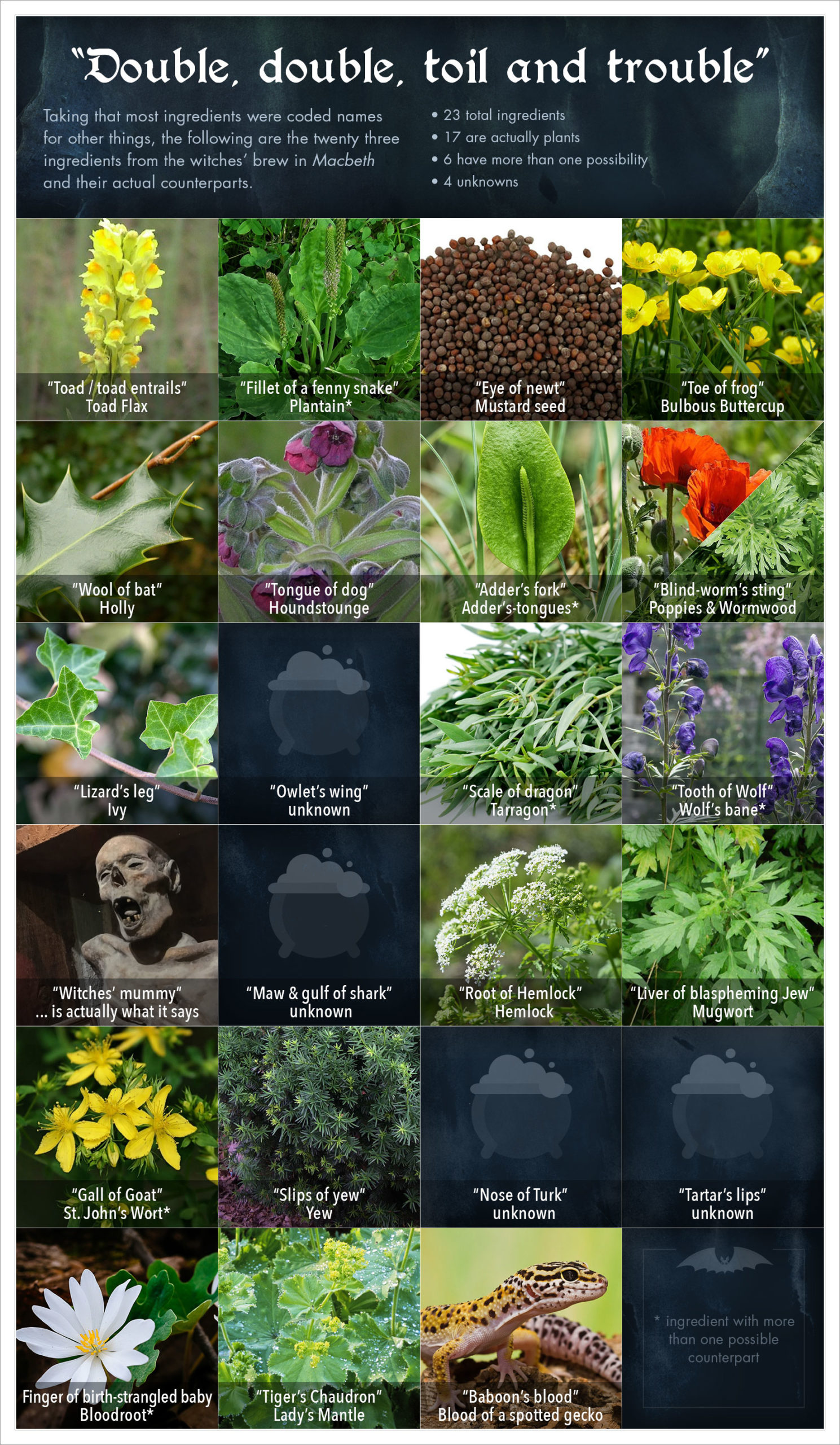Abracadabra
The magic word with a magical/medical past.
The exact origin of abracadabra is unknown but what is known is, before its modern usage by stage magicians, it was used as a real magical incantation. The earliest documented instance is the 2nd century medical text Liber Medicinalis by Serenus Sammonicus. As physician to the the Roman emperor Caracalla, Sammonicus prescribed wearing an amulet with the word abracadabra written on it to cure malaria.

Abracadabra’s use in healing magic may have to do with its possible etymologies. One possibility is that it comes from the Hebrew “ebrah k’dabri” or “I will create as I speak”. Or it may have come from “Abraxas” the mystical word/god from the Gnostic belief system. One language it’s not from is Aramaic (which the internet likes to say it is). Often quoted as coming from “Abra Kadabra” meaning “May the thing be destroyed”, this false Aramaic etymology became a popular internet “factoid” because J.K. Rowling used it as the basis for her “Avada Kedavra” spell in the Harry Potter series (a spell that does not cure malaria … or anything else).
Abracadabra became a popular protective magical word to cure a variety of ills. One application was to write abracadabra out 11 times but each time removing the new last letter, forming a triangle pointing down. This could be written on parchment and worn around the neck, or carved into a pendant of some kind, but the idea was the same – you used the word to summon protective spirits. As you worked your way down, abracadabra would disappear and hopefully so would your illness.

From Real Magic to Stage “Magic”
Over the millennia, as our scientific knowledge grew, we learned more about medicine and our belief in magic diminished. In general we no longer rely on magic to cure/protect us from the unknown. Our scientific understanding of the world leaves little room for magic; in a similar way to how we no longer have sea monsters on our maps. Magic went from being a highly-regarded area of study, to fun entertaining tricks illusions with rabbits in hats, decks of cards, sleight of hand, magic wands, etc. Similarly, abracadabra went from being a real magic word to being a performative word for stage magicians.
Added info: In A Journal of the Plague Year, Daniel Defoe mentions that some citizens of London, so desperate for relief from the plague in 1665, took to writing abracadabra in the triangle design on the doors of their homes. The Victorians took to the triangular abracadabra pendant as Western esotericism became popular. Today you can still find abracadabra pendants, should you want a little extra magical protection from the viruses of today.




